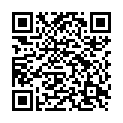Recommended or required reading:
Ahrens, G.-A. et al. (2013), Potenziale des Radverkehrs für den Klimaschutz, TU Dresden im Auftrag des Umweltbundesamtes
Behrend, M. / Meisel, F. (2017), Sharing Economy im Kontext urbaner Mobilität, in: Proff, H. / Fojcik, T. M. (Hrsg.), Innovative Produkte und Dienstleistungen in der Mobilität - Technische und betriebswirtschaftliche Aspekte, Wiesbaden: Springer, pp. 335-346.
BMVI - Bundesministerium für Verkehr und digitale Infrastruktur (2019), Deutsches Mobilitätspanel (MOP), Längsschnittstudie zum Mobilitätsverhalten der Bevölkerung, Jahresbericht 2017-2018.
BMVI - Bundesministerium für Verkehr und digitale Infrastruktur (2018), Mobilität in Deutschland (MID), Studie mit Fokus auf die tief differenzierten Auswertemöglichkeiten demografischer, sozioökonomischer und regionaler Mobilitätsmuster.
Chlond, B. (2013), Multimodalität und Intermodalität, in: Beckmann, K. / Klein-Hitpaß, A. (Hrsg.). Nicht weniger unterwegs, sondern intelligenter? Neue Mobilitätskonzepte. Deutsches Institut für Urbanistik (DifU), Edition Band 11, Berlin, pp. 271-293.
Deffner, J. / Hefter, T. / Götz, K. (2013), Multioptionalität auf dem Vormarsch? Veränderte Mobilitätswünsche und technische Innovationen als neue Potenziale für einen multimodalen Öffentlichen Verkehr, in: Schwedes, O. (Hrsg.), Öffentliche Mobilität - Perspektiven für eine nachhaltige Verkehrsentwicklung, Wiesbaden: Springer, pp. 201-227.
Eryilmaz, E. et al. (2014), Collaborative Management of Intermodal Mobility, FZI Forschungszentrum Informatik, Karlsruher Institut für Technologie (KIT), Institut für Verkehrswesen.
Gebhardt, L. et al. (2016), Intermodal Urban Mobility: Users, Uses, and Use Cases, in: Transportation Research Procedia, Vol. 14, pp. 1183-1192.
Goletz, M. / Heinrichs, D. / Feige, I. (2016), Mobility Trends in cutting-edge cities, ifmo - Institut für Mobilitätsforschung, München.
Henkel, S. et al. (2015), Mobilität aus Kundensicht - Wie Kunden ihren Mobilitätsbedarf decken und über das Mobilitätsangebot denken, Wiesbaden: Springer.
ifmo - Institut für Mobilitätsforschung (Hrsg.) (2011), Mobilität junger Menschen im Wandel - multimodaler und weiblicher, München.
Jarass, J. / Oostendrop, R. (2017), Intermodal, urban, mobil – Charakterisierung intermodaler Wege und Nutzer am Beispiel Berlin, in: Raumforschung und Raumordnung 75, pp. 355-369.
Kagerbauer, M. et al. (2015), Intermodale Mobilität - Elektromobile Fahrzeugkonzepte als Zubringer zum Öffentlichen Verkehr, in: Proff, H. (Hrsg.), Entscheidungen beim Übergang in die Elektromobilität - Technische und betriebswirtschaftliche Aspekte, Wiesbaden: Springer, pp. 567-583.
Kindl, A. et al. (2018), Smart Station - Die Haltestelle als Einstieg in die multimodale Mobilität, Studie im Auftrag des Bundesministeriums für Verkehr und digitale Infrastruktur unter FE-Nr. 70.918/2016, Berlin.
Kuhnimhof, T. et al. (2019) - Veränderungen im Mobilitätsverhalten zur Förderung einer nachhaltigen Mobilität, Abschlussbericht Deutsches Zentrum für Luft- und Raumfahrt e.V. (DLR) im Auftrag des Umweltbundesamtes (Forschungskennzahl 3716581050, UBA-FB 002834), Texte 101/2019.
Nobis, C. (2013), Multimodale Vielfalt. Quantitative Analyse multimodalen Verkehrshandelns, Dissertation, Humboldt-Universität Berlin, Berlin.
Schönau, M. (2016), GPS-basierte Studien zur Analyse der nachhaltigen urbanen Individualmobilität, Dissertation, Universität Ulm, Ulm.
Wolter, S. (2012), Smart Mobility – Intelligente Vernetzung der Verkehrsangebote in Großstädten, veröffentlicht in: Zukünftige Entwicklungen in der Mobilität, pp. 527-548, Springer Fachmedien Wiesbaden.
Zumkeller, D. et al. (2005), Die intermodale Vernetzung von Personenverkehrsmitteln unter Berücksichtigung der Nutzenbedürfnisse (INVERMO), Schlussbericht der KIT, Karlsruhe.
[updated 23.11.2020]
|


